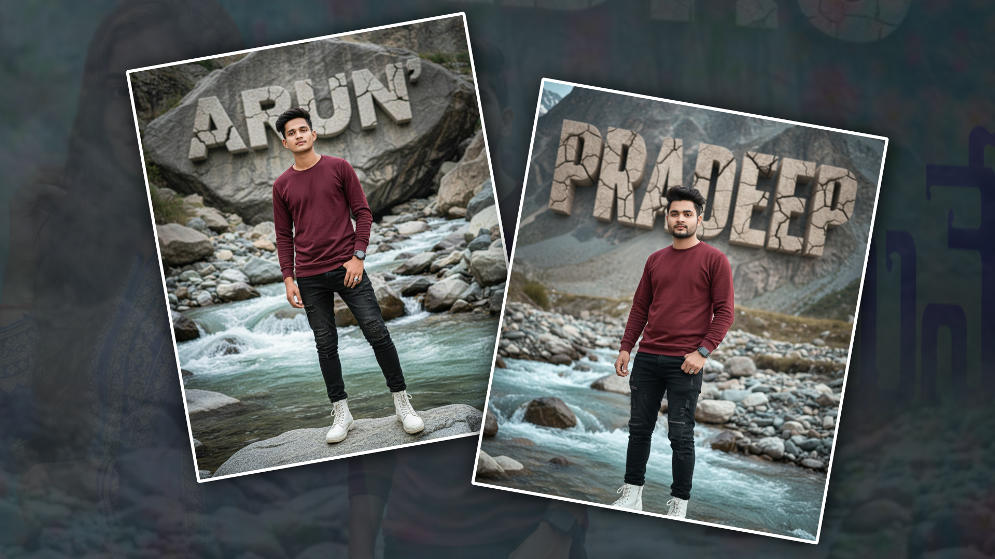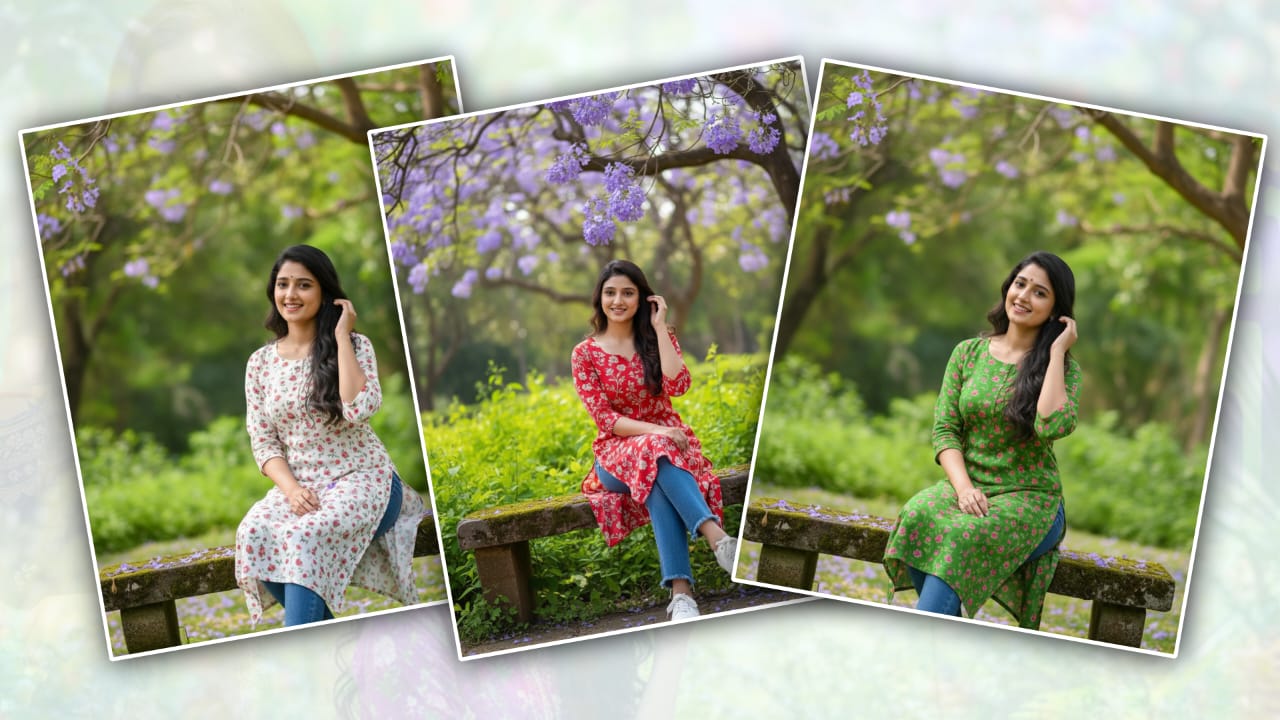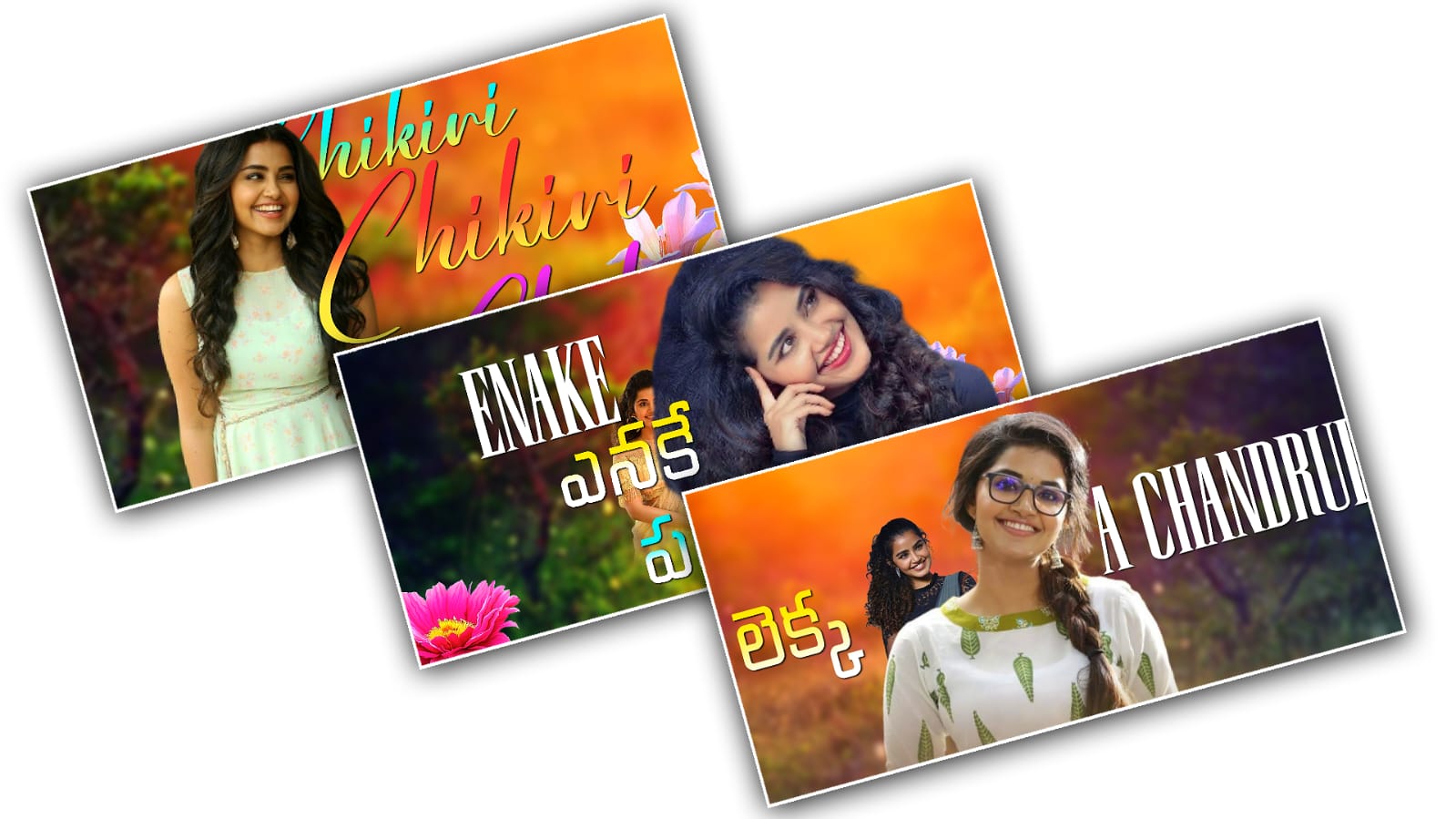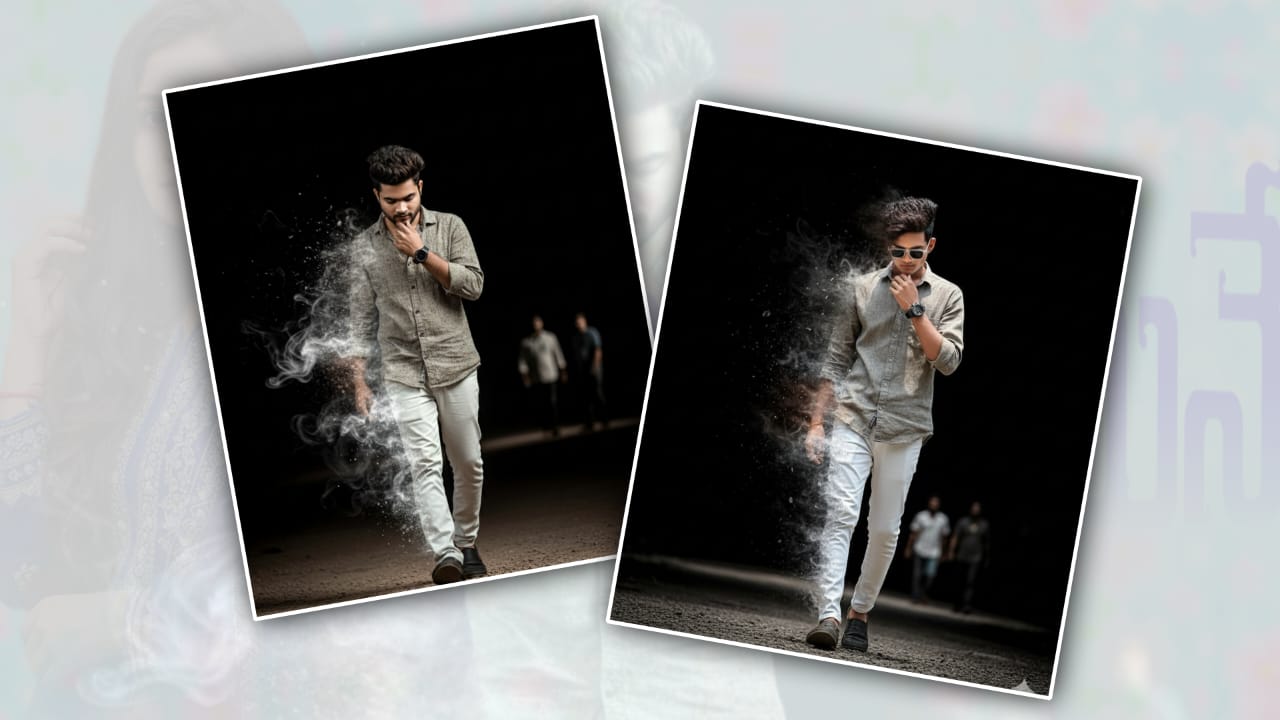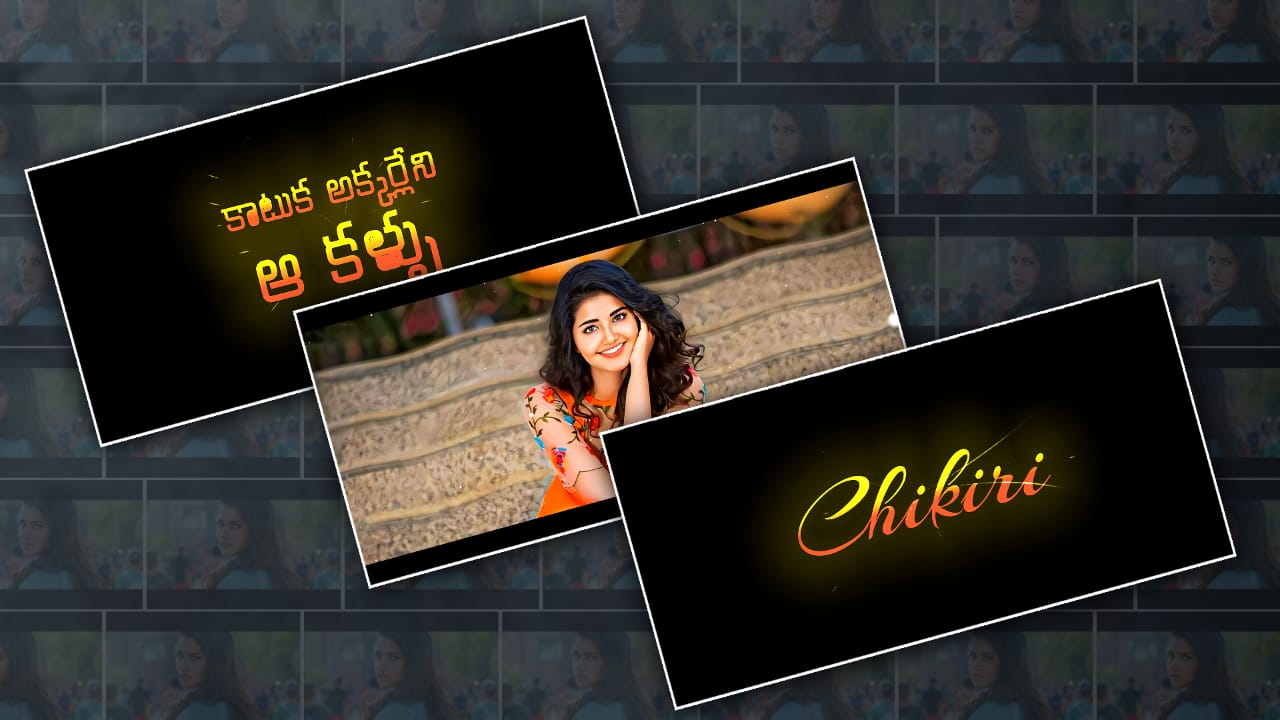The Rise of 3-D Name Art in Mobile Photo Editing
In the ever-evolving global mobile content introduction, one of the maximum desirable trends to emerge these days is 3-D call art image modifying. What started as simple text overlays on snapshots has grown into fully stylised 3-dimensional renderings of names, initials and monograms, embedded into dynamic backgrounds, gradients, textures and lighting fixtures. Smartphones today are more than just seize devices — they are innovative studios in your pocket — and cell apps targeted on image enhancing have grown to assist 3-d typography, depth effects, rotation, and vibrant shade gradients. The appeal is instant: a name rendered in 3D seems ambitious, customised and percentage-worthy on social media. By raising what turned into as soon as a simple call on picture right into a stylised piece of artwork, users can specify identity, rejoice events, create precise profile photos or really make their content stand out. The surge in demand for these varieties of edits reflects broader traits: the rush toward personal branding, dynamic visuals tailored to social media feeds, and the preference for something fresh, virtual and expressive.
Why 3D Name Art Has Captured Attention
There are numerous reasons why 33Dc3D artwork has tturnedout to be so famous in cellular image modifying. First, the 3D effect itself provides a feel of depth and class. Instead of flat textual content lying over a photo, the call seems to task projectors to cast shadows, reflect light, or rotate, creating an extra tactile, visually compelling result. Second, the accessibility of mobile apps has decreased the barrier: wwhenein as soon as one wanted desktop layout equipment, these days many apps will let you make those edits in your phone in minutes. For instance, apps such as the ones described in their descriptions allow users to “write 3-D Name on Picture using lovely fancy font fashion” and to ppersonalise bevel, shine and texture.
Third, social media behaviours favour putting visuals. A pput-upring a mind-blowing name artwork edit is more likely to seize interest, pressure engagement, and be shared—especially on platforms like Instagram, WhatsApp, TikTok or Snapchat. Fourth, the trend ties into the growing interest in personalisation and virtual identity: your name will become the design itself, giving you ownership of your visual footprint.
Mobile Apps Facilitating the Trend
One of the key enablers of this three-D name artwork fashion has been mobile apps dedicated to it. For example, the app “three-D Name Art – 3D Title Maker” offers functions such as three-D text, bevel and shiny outcomes, custom fonts, gradients, curved text, decal layers, and rotating camera angles.
Another, “3-D Name Art – Photo Editor”, emphasises ease of use: you can choose a background image, upload your name in fancy fonts, observe mirror or shadow consequences, stickers and proportion without delay.
These applications replicate how cell editing is now not pretty much filters and cropping, but about layered consequences, 3D factors and dynamic typography. Moreover, light-weight equipment now ooffersthings as gradient text, rotating dcamerasimulation and intensity phantasm, as seen in apps like “3-D Magic Fonts Name Art Photo Effects Pics Editor”.
The boom of those apps alerts that many mobile users want more than “only a filter out” — they need design-led, personalised visuals that stand out.
Key Elements of Effective 3-d Name Art
When we examine what makes a three-D name art visually attractive, several essential factors emerge. Firstly, the typography: choice of font, length, beveling or embossing, and the way the name interacts with the history. A robust three-D call artwork piece often uses bold, legible fonts with intensity, shadow or highlight to offer dimensionality. Then there may be the lighting and shading: true edits simulate a mild source, forged shadows, and possibly reflect subtle gradients or metal textures, making the letters appear to pop off the heritage. Many cell apps provide built-in options for this. Third, heritage and texture: the historical past can be easy (strong shade or gradient) or more complex (photograph, summary layout, texture, bokeh, etc.). The relationship between history and the 3-D call is crucial — assessment is crucial so the text stands out; however, history must supplement, now compete. Fourth, colour colouration gradient use: vibrant gradients, metallic finishes, neonand lows are all famous in 3-D name art. Many apps offer palette controls, permitting multiple colouration or gradients across the text composition and context: the call placement, attitude of “camera” inside the mock three-D scene, rotation, and length relative to the ground item. meare rpps permit you to rotate the 3D text, alternate aangles, and tiltthe letters for dynamic impact. In sum, each of those factors wdeserves attentionif your cell three-D call art goes to aappearextraordinary rather than amateurish.
Step-by-Step Workflow on Mobile
Creating a trending 3-D name artwork edit on mobile may be broken down into a sstep-by-step flow— ddespitethoughdetails may additionally vary depending on the precise app you operate. First, open your 33-Dc3-D3-D artwork app of preference and pick a heritage. This might be a pre-loaded template inside the app, a photo out of your gallery, or a plain gradient. Choose something so that it will permit your name to ftandd Second, upload your call (or initials). Select the text device, type your name, choose the font and practice preliminary settings: length, colour, spacing. Third, observe the 3-D effect: enable bevel or emboss, set depth or extrusion, observe shadows and highlights, tilt the text or rotate it to offer attitude. This is wherein the “3D” illusion is created. Fourth, refine the lighting fixtures and colorcolourationnose gradient fills or steel finishes for the text, adjust lthe lightingpath, practice textures or mappings if supported. Choose a ccolourthat contrasts well with the background. Fifth, upload gildings if preferred: stickers, shadows, glows, glitters, decorative factors including crowns, butterflies, hearts or different symbols to personalise in addition. Many apps permit one-click on aadditionof such stickers. Sixth, modify composition: reposition the textual content, scale it, rrotatethe virtual digicam perspective for na niceimpact. Also check universal stability — you need the call to dominate hhowve r not, overwhelm. Seventh, export and proportion: after you’re glad, keep the image in your cellphone and proportion tit tosocial media, set ait s at profile picture, or use it as story content Some apps even support animation or video export. By following this workflow, mobile users can create pprofessional-lookingart while not having ccomputer-aided designsoftware.
Creative Applications and Use Cases
The programs of 3-D name art in mobile enhancing are ample and more and more innovative. As one apparent use case, users create customised profile photographs with their call in 3-D — this works particularly nicely for social media influencers, game enthusiasts or everyone wanting a signature appearance online. Another is event-particular posts: for birthdays, anniversaries, weddings, or competition greetings, you’ll be able to render a 3-D version of the celebrant’s call with relevant heritage and décor (e.G.,e.g.ding rings, cake, candles). Some apps help with templates tailored for those activities. A third use case is emblem-oriented commercial enterprise proprietors or designers may use 3-D C3D artwork to create trademarks, taglines, or nameplate their cellular advertising material, description notes, you can “make a complete layout, then, rotate the photograph like your personal style” and design an emblem and 3-d3-Dme on Picture or three-D call Art Designing with three-D textural gradient character.
Additionally, you could see three-D call art used for fame updates, tale content material, thumbnails for YouTube motion pictures or channel art—wherein formidable call visuals help seize interest. Another rising place is personalised products: once you have created a high-decision call art layout on canvas, it may be printed on mugs, t-shirts, cellphone covers or digital banners. The versatility of mobile-based creation permits a seamless leap from idea to shareable content.
This Trend Is Especially Relevant in 2025
As we discover ourselves in 2025, numerous broader technological and social trends amplify the relevance and recognition of three-D name artwork for mobile users. One such fashion is the proliferation of exquisite cell cameras and displays: smartphones now support higher resolution, HDR, huge colour colours and higher show of gradients and steel finishes, making three-D textual contentpopp the screen. Another fashion is the upward thrust of creator lifestyle: more humans are building nnon-private factories oon-line businesses and searching out specific visuals in preference to templated posts. The call for custom content is better than ever. Also, social media algorithms favour originality and visible effect — a Stylised 3-d n3D art post may stand out eorea typical quote picture. Further, cellular editing apps are getting extra powerful and available: capabilities that were as ssoon as ordinaryto computing devices exist in cellular variations (depth outcomes, bevels, texture fills), so the space abetween professionaland cell content is narrowing. In addition, the trend of “micro-branding” — every consumer’s social profile is handled as a mini-emblem — manner that visuals inclusive of custom 3-d name artwork are an iincreasing number With thesethoughtss in25 is an appropriate time to undertake this cellular editing style.
Common Mistakes to Avoid
Creating brilliant three-D call artwork on cellular comes with its own pitfalls. First, nnegativeassessment or ba busyhistorical past could make the 33Dn3D unreadable. If the heritage and textual content shshadesarecomparable, the impact is lost. Always take a look at clarity. Second, over-embellishment: too many effects (glows, stickers, textures, gradients) may additionally make the result aappearin preference to polished. Simplicity frequently wins. Third, unrealistic lighting fixtures: if the three-D text has inconsistent shadows or abnormal highlight placements, the illusion breaks, and the design seems amateur. Ensure the simulated mild supply suits the background surroundings. Fourth, ignoring export pleasant: cell apps may compress or downscale photographs, leading to loss of detail—ess, essential in case you plan to use the layout in print or big format. Fifth, neglecting composition: placing the call at awkward angles or off-balance may reduce visible impact. As referred to in the widespread 3D procedures workflow recommendation, right positioning and camera attitude count.
By being aware of pitfalls, you could produce higher-quality consequences.
Choosing the Right Mobile App for 3-D Name Art
When deciding on a cell app for developing 3-D name art, reconsider several options. Look for apps that provide genuine three-D textual content features (depth, extrusion, rotation) rather than mere flat text with drop shadows. For instance, apps like “3D Text On Pictures – Logo and Name Art” explicitly mention capabilities along with 3-D textual content, gradient fills, camera view changes and texture mapping.
Evaluate the font and decal libraries: an app with a wide choice of fonts, backgrounds, stickers and textures offers you extra creative flexibility. Check for export alternatives: excessive decision, transparency (if you need to overlay your call artwork onto different backgrounds), and guideguidanc ideo or animation if required. Also assess person interface and simplicity of use: cell enhancing needs to be intuitive so you don’t spend hours wrestling with controls. App overall performance matters — you’re operating on a cellular tool, so lag, crashes UI le can also hinder creativity. Finally, remember cost: a few apps are loose with restricted functions and offer top rate subscriptions; Others may rate in step with asset or template. Choose one that fits your finances and innovative ambition.
Enhancing Creativity: Advanced Tips and Tricks
Once you’ve learned the basics, you can take your 3-d c3-D art edits to the following degree with superior creativity pointers. For instance, experiment with realistic textures: applying steel, chrome, wood or neon textures on your 3-D text can dramatically growth visual attraction. Use reflections: in case your three-D text sits on a “ground” or heritage surface, including a diffused reflection or shadow complements realism. Play with camera angles: rotate or tilt the textual content slightly to provide attitan ude rather than straia ght-on, flat look. Use shade gradients smartly: combining complementary contrasting gradients inside the text can create dynamic visual interest. Add depth of subject blur: if your app helps it, blur the background slightly while maintaining the textual content crisp to emphasise. Use background lighting fixtures or bokeh consequences: shining mild at the back of the text or including mild flares can decoaddma. Combine textual content with imagery: as an example, integrate a part of the call right into a history photo (e.g., ending the “O” for your call into a sparkling orb). Animate it: if your tool allows, make the text rotate, shimmer or animate in 3-d — a short video loop for social stories is extraordinarily shareable. Play with bad area: don’t feel you need to fill the whole canvas; occasionally leaving respiration room around the three-D name makes it more elegant. By making use of those advanced tweaks, your cellular 3D name art will feel greater professional and visually distinct. In a digital environment, private branding and social media presence are vital. A visually appealing name artwork picture can serve as a personal signature. When fans see a constant style of custom call artwork, it reinforces the individual’s identification or emblem. Content creators, influencers or even informal users an increasingly aware of the price of being visually wonderful. A mobile-edited 3D call picture works as a profile image, channel header, story put up or highlight cover — all reinforcing a regular aesthetic. Moreover, social media algorithms reward engagement and originality; a compelling image is much more likely to be stored, shared and commented on. Having an excessive effect visible like a 3-d 3De artwork can therefore amplify online reach. In addition, this trend supports the concept that content isn’t just about message—it’s approximately design. Visual consistency across posts, tales and profiles enables building recognisability. Mobile apps make this smooth: when you’ve created a signature 3-d 3-D art fashion, you can reflect it speespeedily destiny posts, keeping your visible identity cohesive.
Monetising Your 3D Name Art Skills
Beyond private use, many users are discovering approaches to monetise their three-D name artwork creations. If you end up proficient in cellular 3-d 3-Dt modifying, you could provide customised call artwork services to others: personalised profile snapshots, channel artwork, occasion posters, or virtual invites. Freelance graphic paintings can be achieved totally via cellular apps — reducing overhead. Some creators sell templates or Photoshop/Premiere-fashion files that others can customcustomisehey offer a “name artwork package deal” for social media use. You would possibly set up a small shop on a platform like Etsy, offering custom name artwork for weddings or birthdays—humans like to pay for personalised design that stands proud. Another sales course: developing short “how-to” video tutorials of three-D name artwork editing (specifically for mobile) and monetising via platforms like YouTube or Instagram. As the fashion keeps, mobile modifying competencies that had been once niche now have calla for influencer branding, mini-agencies, digital marketing businesses. Therefore, gaining knowledge of 3D call art on a cell isn’t just fun—it may become a hobby.
Mobile Apps Facilitating the Trend
One of the important tnablers of this three-D call artwork fashion has been cell apps committed to it. For instance, the app “3-D Name Art – 3-d Title Maker” offers features such as 3-d text, bevel and shiny outcomes, custom fonts, gradients, curved text, decal layers, and rotating digital camera angles.
Another, “three-D Name Art – Photo Editor”, emphasises ease of use: you can select a heritage photograph, upload your call in fancy fonts, observe mirror or shadow consequences, stickers and share directly.
These programs reflect how mobile editing is no longer just about filters and cropping, however approximately layered results, 3D elements and dynamic typography. Moreover, light-weight equipment now provides features like gradient text, rotating digital camera simulation and intensity illusion, as seen in apps like “3-D Magic Fonts Name Art Photo Effects Pics Editor”.
The boom of these apps indicates that many cellular customers want more than “only a clear out” — they need layout-led, personalised visuals that stand out.
Key Elements of Effective Three-D Name Art
When we take a look at what makes a three-D name artwork visually attractive, several essential elements emerge. Firstly, the typography: choice of font, length, beveling or embossing, and the way the name interacts with the heritage. A robust 3-D call art piece often uses bold, legible fonts with depth, shadow or spotlight to offer dimensionality. Then there are lighting fixtures and shading: properly edited to create a light supply, forged shadows, and perhaps reflect diffused gradients or metallic textures, making the letters seem to pop off the page. Cellular apps provide integrated options for this. Third, heritage and texture: the heritage can be easy (solid colour or gradient) or extra complicated (picture, abstract layout, texture, bokeh, etc.). The contrast between the ground and the 3-D name is vital — contrast is important so the textual content sticks out, but the history ought to complement, no longer compete. Fourth, colour and gradient use: vibrant gradients, steel finishes, neonand glows are all famous in 3D name artwork. Many apps offer palette controls, allowing multi-shade fills or gradients across the text. Fifth, composition and context: the name placement, angle of “digital camera” within the mock 3-d 3-Dne, rotation, size relative to the historical all, remember. Many apps allow you to rotate the 3-d3Dxtual content, change perspective or tilt the letters for a dynamic effect. In sum, each of these factors needs attention in case your mobile 3-D name art is going to look tremendous in preference of amateurish.
Step with the aid of Step Workflow on Mobile
Creating a trending 3-D call art edit on mobile can be damagedbrokenight into a step-bystep-by-stepow — even though the information may vary depending at the onrticular app you use. First, open your 3D call art app of preference and pick out a historical past. This is probably a pre-loaded template in the app, a photo from your gallery, or a plain gradient. Choose something so one can allow your call to stand out. Second, add your name (or initials). Select the text tool, kind your call, choose the font and practice initial settings: size, shade, spacing. Third, observe the 3-d eff3D: enable bevel or emboss, set intensity or extrusion, observe shadows and highlights, tilt the text or rotate it to give angle. Tan his is in whice “3D” phantasm is created. Fourth, refine the lights and shade: select gradient fills or metallic finishes for the textual content, alter the pat follow textures or mappings if supported. Choose a colour palette that contrasts properly with the background. Fifth, add elaborations if desired: stickers, shadows, glows, glitters, ornamental factors such as crowns, butterflies, hearts or different symbols to personalise similarly. Many apps allow one-click addition of such stickers. Sixth, modify composition: reposition the textual content, scale it, rotate and the virtual digicamcamerative for quality ea ffect. Also check average stability — you want the name to dominate howeve,r not overwhelm. Seventh, export and share: once you’re happy, keep the photo in your cellphone and proportion to sociit al media, set as a prit ofile image, or use it as story content materiapps even help animatiwith on or video export. By following this workflow, cellular customers can create expert-searching three-D call art with no need for desktop hot software.
Creative Applications and Use Cases
The applications of 3-d cal3-Drtwork in cellular enhancing are ample and increasingly innovative. As one obvious use case, customers create customised profile photographs with their name in 3-d — t3D works specifically properlwellcial media influencers, gamers or every person trying a signature look on lineonlineer is event-precise posts: for birthdays, anniversaries, weddings, or competition greetings, you possibly can render a three-D model of the celebrant’s call with relevant background and décor (e.G., wee. g.g jew elryjewellery candles). Some apps aid temoffertes tailored for those activities. A third use case is emblem-oriented: small business proprietors or designers can also use 3-D call art to create trademarks, taglines or call-plates for his or her mobile advertising materials. As one app description notes, you may “make completa e design then r,otate the photograph like your very own fashion” and design a “embannem and 3D Name on Picture or 3D name Art Designing with 3-D text gradient function.”
Additionally, you may see 3D call art used for status updates, story content, thumbnails for YouTube films or channel artwork—where bold name visuals help grab attention. Another emerging area is personalised products: once you’ve got cre a excessive-resolution name artwork layout on cell, it may be printed on mugs, t-shirts, cellphone covers or digital banners. The versatility of cellular-based introduction permits a seamless soar from idea to shareable content mate.
This Trend Is Especially Relevant in 2025
As we discover ourselves in 2025, several broader technological and social tendencies enlarge the relevance and recognition of three-D call art for mobile customers. One such fashion is the proliferation of amazing cellular cameras and screens: smartphones now offer higher resolution, HDR, extensive colour profiles and better display of gradients and metallic finishes, making 3D textual content pop on the display. Another trend is the upward thrust of an author’s way of life: greater human beings are constructing personal brands online, communities searching out particular visuals in preference to templated posts. The call for for custom content is better than ever. Also, social media algorithms favour originality and visual impact — a Stylised 3-D name art put up may stand out greatmore an everyday quote picture. Further, mobile editing apps are becoming extra powerful and available: features that had been as soon as distinct to computing devices exist in cell versions (depth effects, bevels, texture fills), so the gap between desktop and cell content is narrowing. In addition, the fashion of “micro-branding” — every consumer’s social profile is treated as a mini-brand — means that visuals, including custom three-D call art, are increasingly applicable. With these thoughts in 2025 is an appropriate time to undertake this mobile modifying style.
Common Mistakes to Avoid
Creating incredible 3-D name artwork on mobile comes with its very own pitfalls. First, a terrible comparison or a busy historical past can make the three-D name unreadable. If the heritage and text coloracolourationoo comparable, the impact is misplaced. Always take a look at readability. Second, over-embellishment: too many outcomes (glows, stickers, textures, gradients) may make the result appear in preference to polished. Simplicity often wins. Third, unrealistic lighting: if the three-D textual content has inconsistent shadows or extraordinary highlight placements, the phantasm breaks and the design seems amateur. Ensure the simulated light source fits the historical surroundings. Fourth, ignoring export best: cell apps might also compress or downscale photos, main to a lack of element—vit, in case you plan to use the design in print or hulalarge. Fifthglecting composition: setting the call at awkward angles or off-centre also lessens the visible effect. As cited in the generative 3D photography workflow advice, proper positioning and digital camera attitude rely.
By being privy to those pitfalls you m, ay produce higher-quality sequences.
Prompt
Ultra-realistic 8K DSLR full-body cinematic portrait of a handsome young man (use uploaded face -keep 100% facial accuracy, no changes) standing confidently in front of a majestic mountain rock with a flowing river in the background. He is wearing a maroon shirt, black rugged jeans, and white boots, accessaccessorisedan Apple Watch and a diamond ring. His short black and brown hair is neatly styled, and his expression shows calm confidence. Behind him, the text ” SRIKANTH ” appears in massive 3D Break Stone-style letters, seamlessly integrated into the natural rocky landscape. Lighting: natural soft daylight with realistic shadows and reflections, crisp detail, and cinematic depth of field. Style:ultra-realistic, powerful, nature-inspired, 8K clarity, DSLR tone, high dynamic range.
